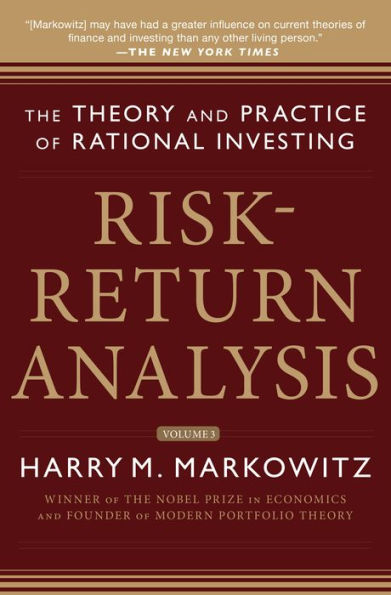The man who created investing as we know it provides critical insights, knowledge, and tools for generating steady profits in today’s economy.
When Harry Markowitz introduced the concept of examining and purchasing a range of diverse stocks—in essence, the practice of creating a portfolio—he transformed the world of investing. The idea was novel, even radical, when he presented it in 1952 for his dissertation. Today, it’s second-nature to the majority of investors worldwide.
Now, the legendary economist returns with the third volume of his groundbreaking four-volume Risk-Return Analysis series, where he corrects common misperceptions about Modern Portfolio Theory (MPT) and provides critical insight into the practice of MPT over the last 60 years. He guides you through process of making rational decisions in the face of uncertainty—making this a critical guide to investing in today’s economy.
From the Laffer Curve to RDM Reasoning to Finite Ordinal Arithmetic to the ideas and concepts of some of history’s most influential thinkers, Markowitz provides a wealth and depth of financial knowledge, wisdom, and insights you would be hard pressed to find elsewhere.
This deep dive into the theories and practices of the investing legend is what you need to master strategic portfolio management designed to generate profits in good times and bad.
The man who created investing as we know it provides critical insights, knowledge, and tools for generating steady profits in today’s economy.
When Harry Markowitz introduced the concept of examining and purchasing a range of diverse stocks—in essence, the practice of creating a portfolio—he transformed the world of investing. The idea was novel, even radical, when he presented it in 1952 for his dissertation. Today, it’s second-nature to the majority of investors worldwide.
Now, the legendary economist returns with the third volume of his groundbreaking four-volume Risk-Return Analysis series, where he corrects common misperceptions about Modern Portfolio Theory (MPT) and provides critical insight into the practice of MPT over the last 60 years. He guides you through process of making rational decisions in the face of uncertainty—making this a critical guide to investing in today’s economy.
From the Laffer Curve to RDM Reasoning to Finite Ordinal Arithmetic to the ideas and concepts of some of history’s most influential thinkers, Markowitz provides a wealth and depth of financial knowledge, wisdom, and insights you would be hard pressed to find elsewhere.
This deep dive into the theories and practices of the investing legend is what you need to master strategic portfolio management designed to generate profits in good times and bad.

Risk-Return Analysis Volume 3
336
Risk-Return Analysis Volume 3
336eBook
Related collections and offers

Product Details
| ISBN-13: | 9780071818339 |
|---|---|
| Publisher: | McGraw Hill LLC |
| Publication date: | 04/07/2020 |
| Sold by: | Barnes & Noble |
| Format: | eBook |
| Pages: | 336 |
| File size: | 3 MB |
